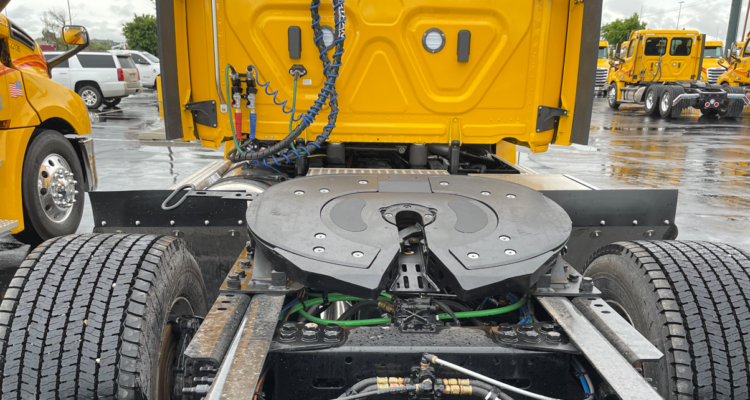Rollovers contribute to approximately half of all large truck fatalities, according to the Insurance Institute for Highway Safety, so any measure that a truck component manufacturer can take to mitigate this risk has huge safety potential. Yet there are many factors that can contribute to dangerous rollover events for a commercial truck. Tractor trailers have high centers of gravity that require careful distribution of goods. Road irregularities, due to varying road material types, create different responses within a tractor trailer. Uneven distribution of loads can lead a trailer to sway, pivoting on its fifth wheel.
For truck and trailer manufacturer JOST International, the fifth wheel may hold a critical key for reducing the collateral damage leading to a rollover event.
The fifth wheel is the horseshoe-shaped component upon which a semi-trailer is connected to the tractor by a vertical kingpin that holds the trailer in place. The fifth wheel must provide a balance of stability and independent rotation between the two vehicle components. It must also provide some resistance against typical trailer pitch and roll.
While fifth wheels have long been made of cast iron or stamped steel, JOST approached pultruded fiberglass manufacturer Strongwell in Bristol, Va., to develop a CFRP beam that could change the overall performance of its fifth wheels.
JOST’s fifth wheel design features a fusion-welded steel top plate that incorporates a CFRP beam within its core. The beam, which is approximately two inches wide and two feet long, provides structural reinforcement for the steel components. Under normal driving conditions, this new fifth wheel operates exactly as a traditional component would. That all changes in a rollover event, at which point the CFRP beam acts like a seat belt.
Upon experiencing plastic deformation during rollover, the beam is designed to absorb the load and redirect energy so the component crumples where intended and helps keep the kingpin in place to prevent the trailer from disengaging.
“JOST came to us with a specific material in mind, but we were able to help get the right blend that could achieve what they were asking for,” says Bhyrav Mutnuri, product development engineer for Strongwell. The engineering team developed a component that uses a proprietary epoxy resin system reinforced by carbon fiber.


